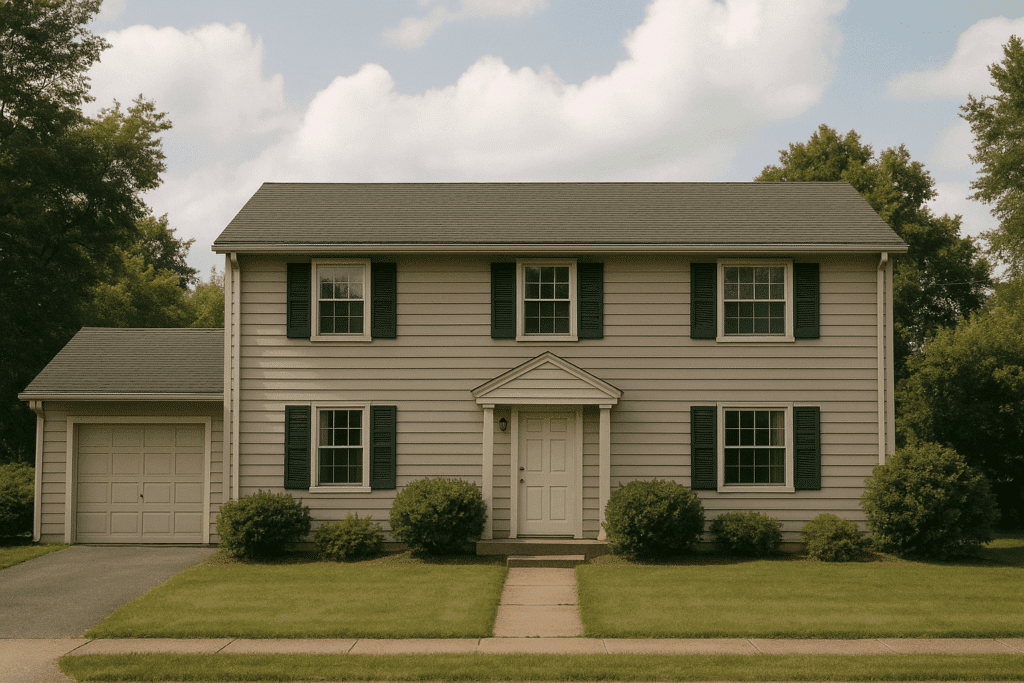Our Expert Tips
Electrical Issues Common in Massachusetts’ Older Homes (And How to Fix Them)

Massachusetts is full of beautiful historic homes—high ceilings, detailed trim, and that unmistakable old New England charm. But behind those walls? You might be looking at an outdated electrical system that wasn’t built for the way we live today.
If your home was built before the 1970s (and especially before the 1950s), it’s worth taking a closer look at your wiring, outlets, and panel. Aging infrastructure doesn’t just struggle to keep up with today’s devices—it can also pose serious safety risks.
Whether you’re in Newton or neighboring Norwood, here’s what to watch for and how to make smart, safe upgrades. Read on and don’t hesitate to reach out to our Massachusetts electricians if you have questions or need to schedule service!
Newton’s Aging Housing Stock: A Hidden Risk
Many homes in Newton were built before modern electrical codes existed. Back then, no one imagined we’d be plugging in multiple smart TVs, computers, kitchen appliances, and EV chargers. What worked for a few lamps and a toaster doesn’t cut it in 2025.
That’s where Castle Electric comes in. We help homeowners modernize their systems while preserving what makes these homes special. And it starts with knowing what to look for.
Most Common Electrical Problems in Older Homes
1. Knob-and-Tube Wiring
If your home was built before 1950, there’s a good chance it still contains some knob-and-tube wiring. This type of wiring has no ground wire, which makes it incompatible with modern appliances and more prone to overheating.
It also degrades over time. The insulation can wear down or crack, especially if it’s been buried under insulation in the attic or walls—something it was never designed for.
What to do: Schedule a full rewiring consultation to evaluate how much of the home still relies on outdated wiring.
2. Ungrounded Outlets
You’ve probably seen these: two-prong outlets that won’t accept modern three-prong plugs. These ungrounded outlets don’t provide a safe path for excess electricity, which increases the risk of shocks or electrical fires—especially in kitchens or bathrooms.
What to do: Upgrade your switches and outlets to grounded three-prong versions, ideally paired with GFCI protection where required.
3. Lack of GFCI Protection
Homes built before the 1970s typically don’t have ground fault circuit interrupters (GFCIs), which are now required in areas with moisture like kitchens, bathrooms, basements, and garages. These outlets shut off power if they detect an imbalance—literally saving lives.
What to do: Add GFCI outlets in all required areas, and test them monthly to make sure they’re functioning properly.
4. Overloaded or Outdated Electrical Panels
Older panels often max out at 60 or 100 amps. Today’s homes typically need 150 to 200 amps to run safely—especially if you have central AC, an EV charger, or updated kitchen appliances.
If your lights dim when the microwave runs, or if you’re constantly flipping breakers, your panel may be working harder than it should.
What to do: Consider a full electrical panel upgrade. Our team can inspect your setup and recommend whether a new panel or circuit breaker upgrade makes sense.
Why These Issues Matter (and When They’re Dangerous)
Most of the electrical issues in older homes aren’t just “quirks”—they’re warning signs. Here’s what can happen if these problems go unchecked:
- Fire risk: Faulty or overloaded wiring is one of the leading causes of residential fires
- Shock hazards: Ungrounded outlets and missing GFCIs increase the risk of electrical shock, especially in wet areas
- Insurance problems: Many insurers will deny claims or raise premiums if outdated systems aren’t brought up to code
- Home sale delays: Old panels, knob-and-tube wiring, and missing protections often turn up during inspections and can stall or tank a sale
Even if you haven’t had issues yet, these systems are living on borrowed time.
How to Fix or Upgrade Safely
The good news? You don’t need to rip everything out all at once. Castle Electric works with Newton and Norwood homeowners to create smart, phased plans for upgrading older electrical systems without overextending your budget.
Rewiring
If your home still has knob-and-tube or aluminum wiring, a partial or full rewire may be the safest solution. We’ll evaluate what needs to be replaced and create a clean, code-compliant system that blends with your home’s structure.
Panel Replacement
Swapping an outdated panel for a modern one increases safety and expands your capacity for new appliances or technologies. Whether you’re renovating or planning to install an EV charger down the road, upgrading your panel gives your home the power it needs.
Whole-Home Safety Inspection
Not sure what you’re working with? A full electrical safety inspection gives you a clear picture of your home’s strengths and weaknesses, and helps prioritize what to tackle first.
Live in a Pre-1970s Newton or Norwood Home?
Your home is full of character—but your electrical system shouldn’t be stuck in the past. If you’re seeing flickering lights, tripping breakers, or just want peace of mind, it’s time to take action.
Book an expert electrical inspection with Castle Electric today. We’ll help you bring your home up to code, up to date, and ready for the decades to come. Call our Newton electricians or Norwood electricians now!
Learn More About Electrical Safety in Newton and Beyond!
Check out our blog posts below for some helpful info, expert tips and more!
- Electrical Safety: What Every First-Time Homeowner Should Know
- Electrical Safety Checklist for Massachusetts Homeowners
- Essential Steps for Troubleshooting Flickering Lights at Home
- How to Spot Electrical Hazards & When to Call an Electrician
- Winter Fire Safety: Essential Smoke Detector Maintenance Tips